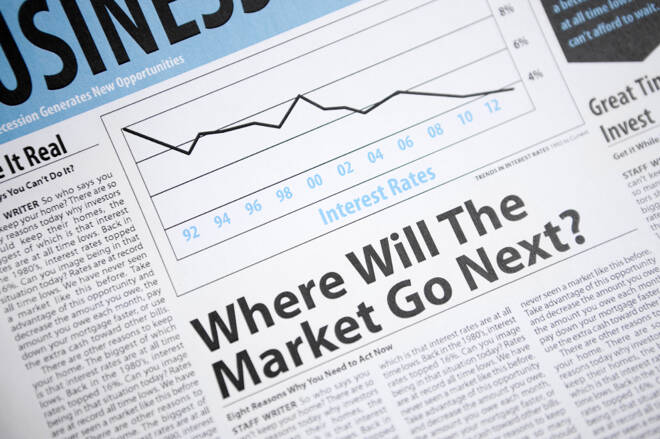Advertisement
Advertisement
The Forex Industry in 2018: Regulation, Market Size, and the Future
Updated: Mar 4, 2019, 13:23 GMT+00:00
Intro
The Forex Industry has changed significantly during the previous year and strives towards a legitimate trading environment.
The Forex Industry has changed significantly during the last year and strives towards a legitimate trading environment. We have discussed Anton Ivanov, Roboforex analyst about the latest updates in 2017 and the direction that the Forex industry aims for.
The Forex industry is a dynamic one and is constantly changing; can you elaborate on all the changes since the beginning of 2017?
I would pay attention to two major aspects, which influenced the Forex industry the most in 2017:
- Major European regulators started taking serious steps to tighten control over the Forex industry. A lot of requirements are focused on the regulated company’s providing their clients with a brand new level of transparency to match the new MiFID II directive.
In addition to that, the new rules forbid bonus programs, which are so familiar to traders, and specify new requirements for the minimum leverage value of 1:50. As a result, many companies move their business to some loosely regulated jurisdictions in order to keep the clients and provide them with the familiar services. Large brokers, including us, do the opposite – they adjust their business in accordance with the regulators’ requirements and are ready to go by the new rules.
- The cryptocurrency boom. The cryptocurrency trading attracts more and more people from all over the world due to the growing popularity of digital currencies and their enormous volatility, which may bring traders the profit they will never make on other financial markets. Newsfeeds are filled with the information that the Bitcoin reached another historic high and this tendency continues up to now. Brokers adapt to the market trends and offer their clients an opportunity to trade cryptocurrencies through the platforms that are familiar to traders.
Cryptocurrencies are the biggest trend of the year so far, how do you see cryptos integrate into the Forex industry in terms of trading and a payment method?
In our opinion, the blockchain technology will change the world in the next 5-10 years. It’s a whole new level of cooperation between parties, which will surely result in improvement of trading conditions and performing clients’ financial operations. Cryptocurrencies are already available for trading at many well-known companies on the market. Virtual currencies are sure to be added to the list of available currencies of the payment systems in the short-term. We’re also looking forward to seeing cryptocurrencies being included into the European legal framework so that the advantages of these instruments could be fully used both for simplifying KYC (Know Your Client) and AML (Anti Money Laundering) procedures and expanding the list of instruments for investment portfolios. It may also provide the similar safety level for retail clients with an opportunity to participate in the Compensation Fund and to work with the Financial Ombudsman.
What about other trends on the Forex market? Can you specify the ones that are the most interesting for the traders right now?
Recently, we’ve seen a clear trend towards more “civilized” trading. Small brokerage companies, which operate using some quasi-legal schemes, are being ousted from the market. Traders, in their turn, are getting pickier when it comes to choosing the broker. The principal selection criteria right now is not a number of bonuses or rebates, but the company’s proprietary technologies and provision of the clients with the products and services that are as convenient as possible. I’d like to pay special attention to multi-asset cloud platforms, which offer an opportunity to trade on a different financial market through the web terminal.
Also, the demand for social trading services, which allow sharing the results of trading, charts, and trading signals, is still pretty strong. In most cases, these services are used by beginners, because basically, it’s an opportunity for any trader, even the one who hasn’t got any trading experience, to make transactions with the same results as experienced professionals.
Traders are also still interested in algorithmic trading. Nowadays, new services appear to provide traders with an opportunity to create their own trading robots even without having any programming skills. It helps to automate most of the routine activities and control some technical aspects and details.
What are the most significant regulation updates in 2017 and what can we expect in 2018?
The most important aspects of the MiFID II, in our opinion, is a brand new level of transparency: creating a single system of monitoring the market by local regulators, disclosure of information to clients before and after trading, significant changes in requirements for the client estimation necessary to provide them with more suitable services in accordance with their personal profiles. We expect the new regulatory requirements to improve the competitive environment, create comfortable conditions for trading, and boost the confidence in the companies with the European regulation.
What is your Forex/CFD’s prediction for 2018 in terms of growth, regulation and market size?
The major trend in the Forex/CFD industry for the next several years is the consolidation of market players amid the increasing legislative pressure. The market will continue growing because there is enough room for expansion. Small brokers will leave the European market for offshore jurisdictions, and European companies, thanks to improved transparency, will attract clients who aren’t ready to make the sacrifice of reliability in order to receive trading benefits. In general, the Forex market will transform into a strong financial institute with corresponding requirements and guarantees.
About the Author
Advertisement
